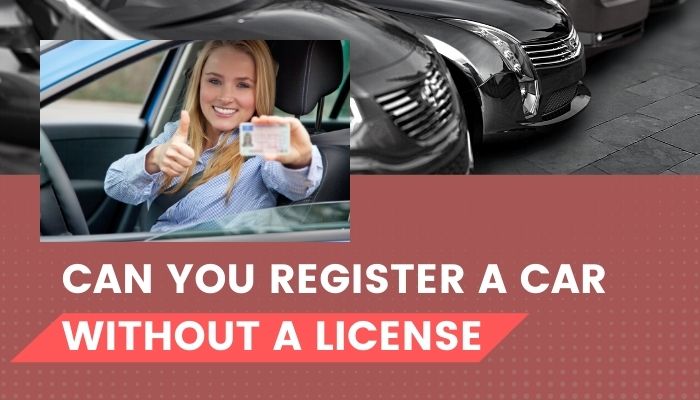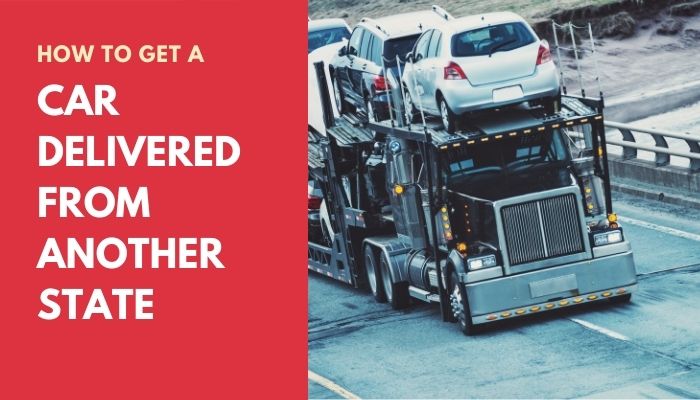How to Buy a Car Out of State from a Private Seller?
If you can’t find your dream car within your state, why don’t you consider buying out of state? Not only are you likely to find a better deal, but that could be the only way to get the specific car made and model you want. You’re likely to find it difficult, especially if you never venture us of your state to purchase something as substantial as a vehicle.
However, before you can start worrying about how to buy a car out of state from a private seller, first consider if it’s worth it. Since you’re dealing with someone in a different jurisdiction, it can cost you lots of time, money, and effort than buying locally.
Possibly, you may have to travel to the location of the car for a test drive. While that’s a good idea, the trip can take a lot of time and be more expensive. Alternatively, you can hire a shipping company to deliver the car to your doorstep. However, that could result in unavoidable extra costs.
Remember that before shipping the vehicle, you may want an independent technician to inspect it. Consequently, you might have to travel to the location or ask someone living in the area to help you. As simple as it may seem, buying a car out of state can be a complicated process that requires you to take additional steps. Keep reading this article to learn everything you need to know to successfully purchase the right vehicle out of state from a private seller.
Advantages of Buying a Car Out of State from a Private seller
- You’ll potentially get a lower price
- You’re playing on a level playing field in negotiation
- There’s also the likelihood to know more about the car
- Inspecting the vehicle can be difficult
- It will likely cost you more time, money, and effort
Disadvantages of Buying a Car Out of State from a Private Seller
- Processing paperwork yourself
- There is no provision for seller financing
- No warranty or guarantee covering the vehicle
- There’s the possibility of getting scammed
How to Buy a Car Out of State from a Private Seller?
Just because it is difficult doesn’t mean buying a car out of state from a private seller is impossible. Here are the steps you can take to navigate through the entire process successfully:
Step 1: Watch Out for Possible Scams
Remember how hard it can be to buy a vehicle out of state? Now think about the possibility of getting scammed by someone living far away from your location. Possibly you might have no recourse if a private car seller from another state scams you. Therefore, as a first step, you should beware of some of the possible scams, including the following:
- Title Scams: Since you’re buying a car out of state, it can be impossible to know the title’s authenticity. If you’re not careful, you might end up paying for the vehicle before the title gets transferred to you. Also, avoid a car with a branded title, indicating that the vehicle is either flood-damaged, salvaged, was once a police car, or was stolen and recovered.
- Identity Theft: When buying a car, you cannot avoid sharing personal information with the other party. However, it can be odd if the seller demands al lot of your private information before allowing you to see the car. They might end up stealing your identity and using it to commit fraud.
- Curb Stoning: Curb stoning refers to the situation where an unlicensed dealer pretends to be a private party selling their vehicle. Most states have illegalized curb stoning due to its potential of resulting in seller-generated lies about the vehicle. Luckily, you can identify a Curb stoner from your first conversation. If they don’t seem to know the specific car, you’re referring to or are too familiar with the buying process, and they aren’t genuine private car sellers. Run!
Step 2: Organize Your Financing
When purchasing a vehicle from a private seller, you should either pay for the vehicle in cash or get a loan before inspecting the vehicle. Remember, you do not have a dealer who can help you arrange to finance. However, as you approach your lender, keep in mind that they might want you to overcome several hurdles before accessing the money.
So, you need to find a lender who can give you a private-party car loan and apply for the maximum amount you’re likely to need for purchasing the car. You can take less if you want, but remember you might have to reapply for another loan if the money is inadequate to pay for the vehicle. Can you handle the inconvenience?
The most common sources of auto loans include banks, finance companies, or credit unions. All of these lenders usually require you to fill a loan application form and attach documents proving that you have a stable source of income. They will determine your eligibility based on the application and your credit score. Once you secure financing, you can move on to the next stage of the car buying process.
Step 3: Find the Right Vehicle
Possibly, you’ve already identified the car you want to purchase. If you haven’t, you should go ahead and look for one. Make sure that the car meets your needs, is affordable to buy, insure, operate, and maintain.
You can search online for used car reviews and rankings or advertisements from private car owners offering their vehicles for sale. After finding the right car, visit online buyers’ forums and learn more about that particular car make and model. That way, you’ll gather enough information, which your mechanic can use during a pre-purchase inspection.
It used to be that you had to pick a newspaper and go through classified ads line by line. Not anyone. A simple search on sites such as Craigslist can yield many options. You can narrow down your search to the car model and location. Be sure to specify that you wish to purchase the vehicle from a private seller. Once you’ve identified an out-of-state seller, contact them via email or phone call. You may want to ask the following questions:
- Has the car ever been in a road crash?
- If so, what repairs were done?
- Are you the vehicle’s original owner?
- Can you provide the car’s service records?
- What’s the mileage on the car, and is the odometer accurate?
- What major mechanical repairs has the car needed?
- Why are you selling?
- Has a teenager driven the car?
- When did you last take the car for inspection?
- What’s the vehicle’s title status?
- How much do you still owe on the car?
- Do you have a ready vehicle history report?
You have to gauge the answers to the questions to see if they satisfy you. Usually, your sense of intuition will guide you on your next step, which is examining the car’s history. Be sure to secure the seller’s vehicle identification number (VIN). They can send it to you via email or text message.
Step 4: Check the History of the Car
There are two ways you can get a vehicle’s history report – buying one yourself or getting one from the seller. If you have to get the report yourself, do it from Carfax or AutoCheck. They offer a package price, which you can use to secure history reports for several vehicles.
Whether you get the history report yourself or from the seller, you should review it for any red flags. Also, verify that the seller gave you the correct information in your conversation over the phone or via email. If the report contains things that the seller didn’t discuss, avoid entering into a deal with them. Possibly, that isn’t the vehicle’s original owner and doesn’t know everything about it, or they’re trying to sell a car they do not own.
Check for any reported accidents and the title status. If you want to know how to buy a car out of state from a private seller, you should beware of sellers who want to sell in another state to conceal the title status. The history report will likely show all the information about the car, except any recent crashes or repairs. If the report indicates that the vehicle has a salvage title, run! After all, no lender will loan you money for that!
Step 5: Inspect the Car Before Buying
Regardless of the vehicle’s location, inspecting it in person is the best way to ascertain that you’re buying the right car. If you can, travel to the location and inspect and test-drive the car yourself. Start by inspecting the car around the entire body and underneath for signs of dripping oil. Take note of the color of smoke (if any) around the vehicle’s exhaust pipe.
Be sure to do a complete visual inspection of the vehicle to check for scratches and dents. Make sure you meet on a sunny day. Check the tires for overall or uneven wear. If the tires are worn out on one side, the vehicle’s alignment isn’t entirely as it should be. Smell the vehicle’s interior for signs of pests, mold, or smoking. If you smell mildew, the vehicle was likely involved in flood damage.
You can carry a magnet to check for attempts to hide rust by filling lower body panels with composite materials. Explore the vehicle’s interior by checking all systems, including lights, navigation, infotainment system, and so on. Don’t forget the air conditioner.
Now you can test drive the car. But before that, take a photo of the vehicle’s license plate and the seller’s driver’s license and send it to a friend or family member. The seller’s driving license name should match the vehicle’s registration. If they don’t match, run!
While on the road, be alert for funny vibrations, musty or unpleasant smells, and unexplained noises. Any of these could indicate serious issues that need resolution. Check the responsiveness of the steering wheel and brakes. Watch for any warning lights and ensure you can see the road clearly from the driver’s seat.
Step 6: Check that the Vehicle Meets Your State’s Requirements
Even as you grapple with how to buy a car out of state from a private seller, make sure it meets your state’s requirements. You can check your State’s DMV website for information on making the vehicle conform with your state’s requirements.
One of the most important things to focus on is compliance with emission standards, limiting a car’s air pollutants. Since you’re buying a used vehicle, it will likely fail the test. So, check. In the United States, California has the most rigorous emission standards.
If the vehicle falls short of the standard, you can buy it and bring it up to speed. However, that could be too expensive, necessitating the purchase of a completely different vehicle. With emission standards, the following states have the exact requirements as California:
- Arizona
- Connecticut
- Maine
- Maryland
- Massachusetts
- New Jersey
- New Mexico
- New York
- Oregon
- Pennsylvania
- Rhode Island
- Vermont
- Washington
Step 7: Negotiate a Price
If the vehicle history and test drive turn out right, negotiate an agreeable price. After researching a fair price, ask the seller how much they want for the car. The seller may inflate the price due to the emotional attachment with the vehicle. Therefore, give a lower counteroffer and state the reasons for it.
Remember, you wouldn’t have the opportunity to go below your first offer. Give justifications like the current market prices of similar vehicles, issues on the vehicle history report, and issues identified during the test drive. Since you’re just about to execute a business transaction, keep emotions out of it. Also, don’t get crushed by the car dealer. Once you agree on a price, ask the seller to avail the car for a pre-purchase inspection.
Step 8: Gest a Pre-Purchase Inspection on the Vehicle
Now that you’re on the brink of buying the vehicle carry out a pre-purchase inspection. Ask an independent mechanic near the location to inspect the vehicle. As part of the inspection, they should check for signs of damage and leaks underneath, collision damage, the quality of repairs performed, and other issues highlighted in the vehicle’s history report.
Additionally, they should check for the vehicle’s recall information and whether the necessary fixes were completed. Check the service paperwork or call the dealership to verify that they happened in case of software updates. With an experienced mechanic, you should have a good idea if the vehicle is worth buying or not. If the inspection report is positive, you can go ahead and buy the vehicle.
Step 9: Pay for the Vehicle
Unless you’re physically present at the dealer’s premises, use a reliable payment such as escrow to pay for the vehicle. Escrow usually holds the money until you’ve received the vehicle and verified it’s what you wanted. Only then can they release the money to the buyer. That protects both you and the seller.
When you place money in escrow, you haven’t completed the purchase. Instead, it’s evidence to the owner that you’re serious with the purchase. That way, you do not have to travel thousands of miles to another state to complete the purchase process. If you decide not to buy it after receiving the car, the money is reversed back to you.
If you decide to pay in cash, do it in a safe place and obtain a bill of sale as evidence. Some sellers may ask for a cashier’s check and ask you to go with them to the bank to be sure it isn’t forged. If you’re financing through a loan, the lender may issue you with a check to submit to the seller. Some lenders may pay the seller directly via electronic transfer or check.
Step 10: Process the Paperwork
After completing the purchase, the seller will hand the car, its title, bill of sale, and other documents to you. Now you have to approach the DMV to register the vehicle in your state. Remember, you haven’t bought the car from a dealership with staff to handle the paperwork. On this, you’re basically on your own.
The seller would have to sign the vehicle’s title to you. Take the signed title and the bill of sale to the DMV and start registering the vehicle to your name. Additional information includes lien lease information and odometer disclosure statements.
The DMV may require you to pay taxes before the title is transferred to you in some states. Most states may require you to register for a new title within 30 days after purchasing the vehicle. Sometimes, the DMV in your state might inspect your vehicle for safety issues like seat belts, brakes, lights, tires, front-end assembly, horn, mirrors, fuel leaks, windshield, wipers, blades, and windows.
Step 11: Shipping the Vehicle
You have two options – to drive the car home or ship it. Choose wisely, bearing in mind the time and possible cost. If the vehicle’s location is far off, consider shipping it. Remember, driving the car yourself involves the cost of fuel, accommodation, and so on. Also, you may pay for temporary registration and additional insurance. Shipping is the cheapest option, especially if the vehicle’s location is far.
Conclusion
Buying a car from another state can be an energy-sapping process. You have to carry out due diligence to avoid getting scammed in the process. Since the buyer and the seller are in different states, inspecting the vehicle can be difficult but not impossible. Executing how to buy a car out of state from a private seller should help you complete the purchase successfully. You might end up with a more affordable deal than if you’d bought the car in your home state.
Frequently Asked Questions (FAQ)
Can I buy a car in another state and drive it home?
Yes. You can buy a car from another state and drive it home after obtaining temporary registration from the seller’s state. Also, your home state may ask you to pay sales tax. Alternatively, you can ship the vehicle instead of driving it home.
What should I do to buy a car out of state from a private seller?
It would help if you did several things to buy a car out of state from a private seller. First, check that the car exists, its safety, emissions, and have it inspected. Once you agree on a price, register the vehicle and drive it home.
What is the safest way to pay for a car out of state?
The safest way to pay for a car out of state is using escrow services to protect both parties. An escrow service holds the money and releases it only after completing the purchase process. Make sure the escrow service is licensed.
What is the cheapest state to buy a car?
Currently, the cheapest state to buy a car in New Hampshire, where there’s no sales tax and the registration fee is low.




